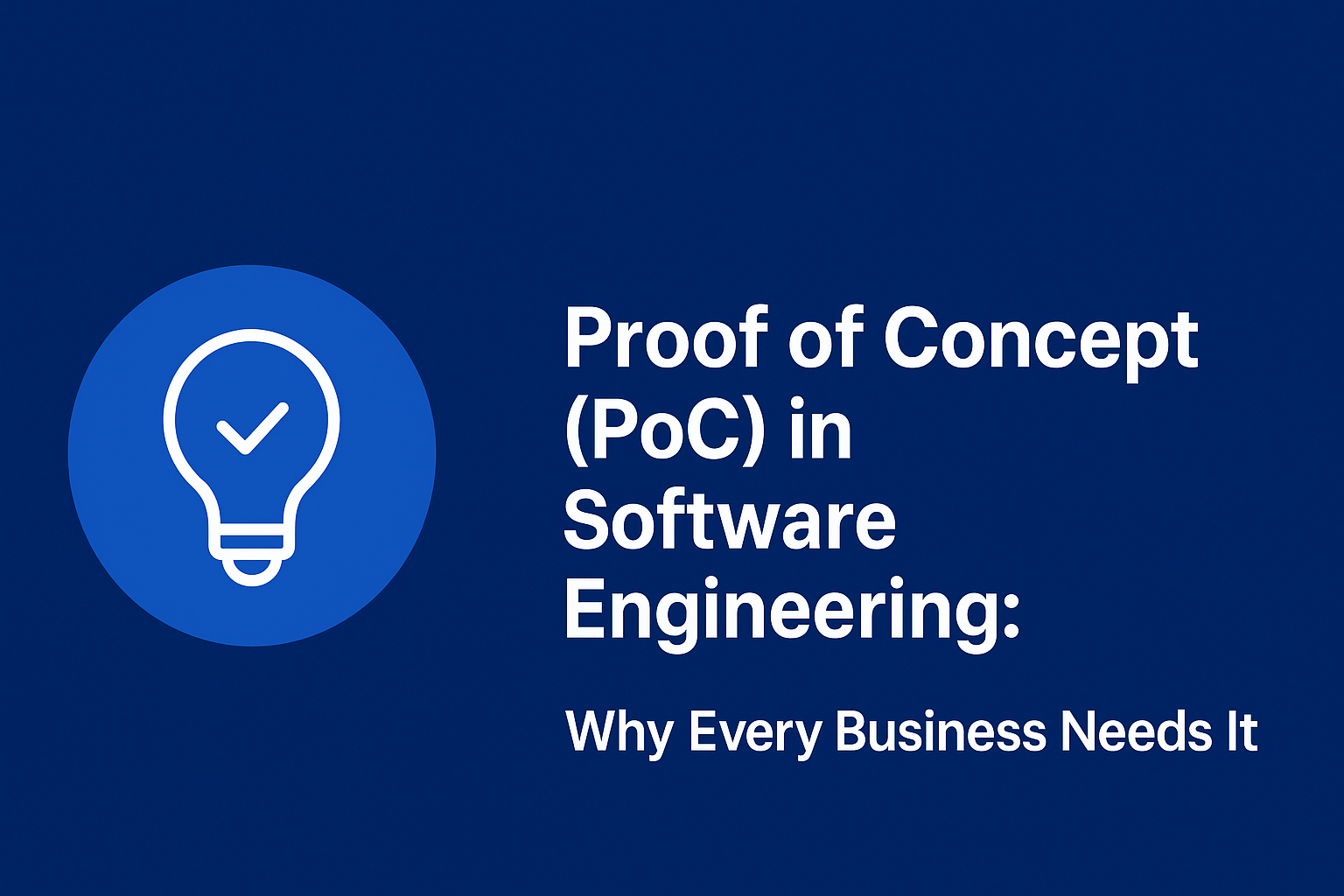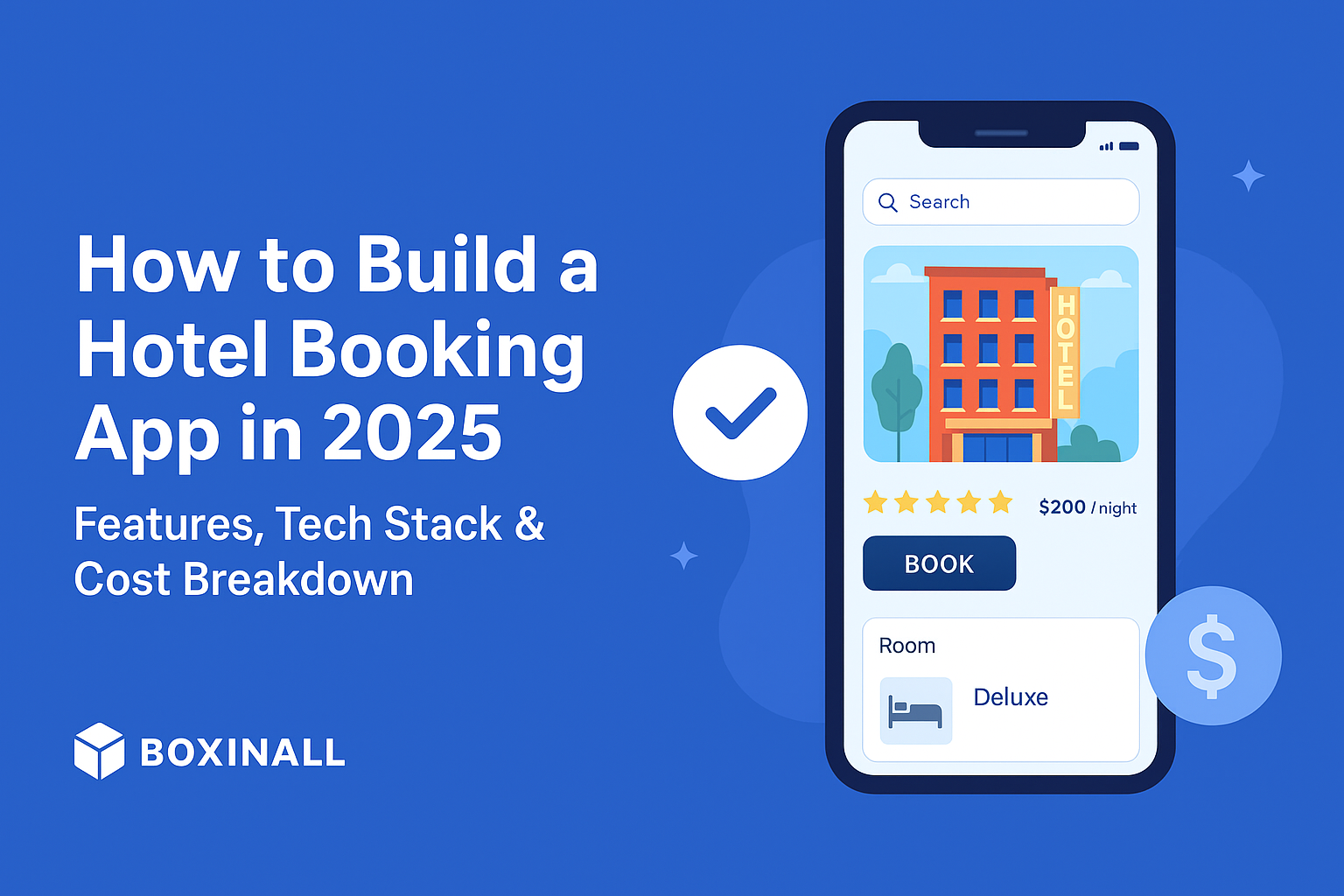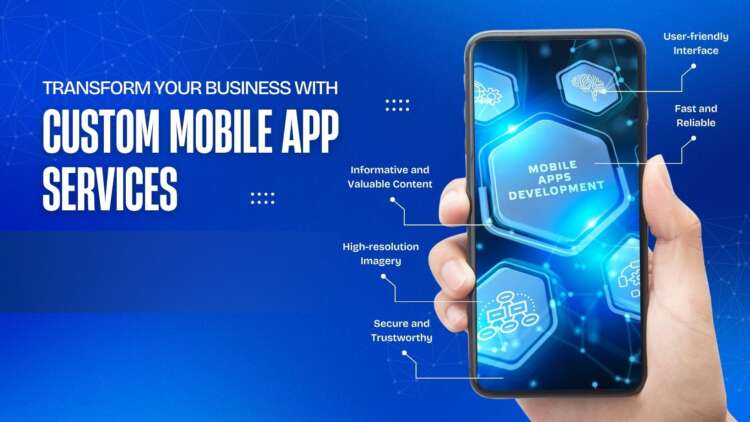Most exceptional product ideas never reach a commercial release. Even those that do often fail to sustain themselves in the market. Why? While many point to poor market research or weak user testing, the truth is often simpler: choosing the wrong technology or failing to test key assumptions early on.
Startups and even established enterprises launching new initiatives often face budget constraints, tight deadlines, and limited resources. As a result, teams cut corners on early testing—only to pay a heavier price later with costly pivots, missed opportunities, or outright project failure.
This is where the Proof of Concept (PoC) comes in. Unlike prototypes or MVPs, a PoC’s sole objective is to validate technical feasibility before large-scale investment. It’s the “early fitting” of your digital product, ensuring it can work as planned before full-scale production.
In this article, we’ll explore:
- What a PoC is in software engineering
- How it differs from Prototypes and MVPs
- The key benefits of running a PoC
- A practical step-by-step guide to developing one
- Real-world case studies of successful PoCs
What is a Proof of Concept (PoC) in Software Development?
A Proof of Concept (PoC) is a small-scale experiment that validates whether a product idea is technically feasible.
- It’s not about delivering a polished product.
- It doesn’t focus on market demand.
- Its primary goal is to prove that your technology, architecture, or integration can actually work.
Think of it as a showcase of possibilities—an internal tool that allows teams and investors to see the potential of a solution before pouring time, money, and resources into full development.
💡 Tip: While PoC answers the question “Can we build this?”, an MVP answers “Should we build this?”
PoC vs Prototype vs MVP
It’s easy to confuse these three concepts. Here’s how they differ:
📌 PoC – Focuses on technical feasibility.
- Short timeframe (days to weeks)
- Tests specific assumptions
- Not a functional product
📌 Prototype – Focuses on user interaction & design.
- Visual and interactive model
- Validates look & feel
- Helps gather feedback from stakeholders
📌 MVP (Minimum Viable Product) – Focuses on market validation.
- Functional product with essential features
- Released to early adopters
- Used to collect customer feedback and guide product-market fit
👉 A smart product development journey often follows this sequence:
PoC → Prototype → MVP → Full Product Launch
Why PoC is Critical for Business Software Development
Running a PoC can be compared to tailoring a custom suit. Before production, the tailor holds fittings to check fit, fabric, and cost. Similarly, PoC ensures:
- Budget Fit: Confirms technology choices match financial constraints.
- Team & Tech Fit: Validates whether your team and tools can deliver.
- Timeline Accuracy: Identifies delays before they become costly.
- Overall Feasibility: Confirms the idea is worth pursuing.
Key Benefits for Businesses
- Avoid wasted investment – Only pursue feasible projects.
- Boost stakeholder trust – Build investor confidence with evidence.
- Better planning – Identify challenges before they escalate.
- Faster development – Streamline product strategy and reduce risks.
- Stronger negotiations – Present credible data to secure funding.
According to CB Insights, the top reasons startups fail are:
- Running out of cash
- Building something the market doesn’t need
A PoC directly addresses both by clarifying feasibility and direction early.
Steps to Develop a Successful PoC
A Proof of Concept is only as strong as its process. Here’s a 7-step approach:
- Define the Idea – Clearly outline the problem you’re solving.
- Set Success Criteria – Establish measurable goals (KPIs, adoption metrics).
- List Resources – Identify tech, infrastructure, and team needs.
- Create a Timeline – Define scope, milestones, and deadlines.
- Build & Test – Develop a small prototype or test environment.
- Review & Refine – Compare results against success criteria.
- Present Findings – Share outcomes with stakeholders, using visuals and metrics.
Real-World Examples of PoC in Action
- Walmart & IBM – Blockchain for Food Safety
Walmart used blockchain PoCs to trace mangos in the US and pork in China. This reduced tracking time from days to seconds, improving food safety transparency. - Naontek – Digital Healthcare Education Platform
The German firm validated consumer interest and technical viability with a PoC before launching Univiva. Within 12 months: 20,000 enrollments and 6,000+ courses added. - Netflix – Open Connect Appliance (OCA)
Netflix tested its PoC for content delivery with ISPs, proving reduced buffering and costs. The success led to a global rollout, reducing reliance on third-party CDNs. - Pajo – Omnichannel Platform
By completing its PoC 40% faster than planned, Pajo validated its omnichannel platform for galleries, hotels, and retail—accelerating time-to-market.
Final Thoughts
A Proof of Concept isn’t optional—it’s essential.
Skipping this stage may save time upfront, but it risks bigger failures later. Whether you’re a startup validating a bold idea or an enterprise launching a new initiative, a PoC helps ensure:
✅ Your technology works
✅ Your resources are aligned
✅ Your investment is justified
At Computools, we’ve seen first-hand how the right PoC can transform uncertainty into confidence, securing funding, stakeholder trust, and a clear roadmap to successful software delivery.
👉 Thinking about launching a new product?
Start with a PoC—it’s your best safeguard against wasted effort and failed launches.



